#Object Oriented Software Engineering
Explore tagged Tumblr posts
Text
Software Technical Interview Review List
Data Structures
Arrays (and Java List vs ArrayList)
String
Stack
Queue
LinkedList
Algorithms
Sorting (Bubblesort, Mergesort, Quicksort)
Recursion & Backtracking
Linear and Binary Search
String/Array algos
Tree traversal
Dynamic Programming
Graph algos (DFS, BFS, Dijksta's and Kruskals)
OOP fundamentals
Polymorphism
Inheritance
Encapsulation
Data abstraction
SOLID and GRASP
Explanations & example questions:
Strings and Arrays [ 1 | 2 | 3 | 4 | 5 | 6 | 7 | 8 ]
Stacks and Queues [ 1 | 2 ]
LinkedList [ 1 | 2 ]
Sorting & searching [ 1 | 2 | 3 | 4 | 5 | 6 | 7 ]
Recursion and Backtracking [ 1 | 2 | 3 | 4 ]
Dynamic Programming [ 1 | 2 | 3 | 4]
Graphs [ 1 | 2 | 3 ]
Tree [ 1 | 2 ]
General DS&A info and questions [ 1 | 2 | 3 | 4 | 5 ]
OOP review & questions [ 1 | 2 | 3 ]
#ive been procrastinating this coding assessment for my interview so bad 😭😭#im just scared of messing up cause i need this internship#But its due soon so im really buckling down now >:)#object oriented programming#algorithms#data structures#software engineering#ref#resource#mypost
20 notes
·
View notes
Text
Should I actually make meaningful posts? Like maybe a few series of computer science related topics?
I would have to contemplate format, but I would take suggestions for topics, try and compile learning resources, subtopics to learn and practice problems
#computer science#embedded systems#linux#linuxposting#arch linux#gcc#c language#programming#python#infosecawareness#cybersecurity#object oriented programming#arduino#raspberry pi#computer building#amd#assembly#code#software#software engineering#debugging#rtfm#documentation#learning#machine learning#artificial intelligence#cryptology#terminal#emacs#vscode
4 notes
·
View notes
Text
For software development jobs please Visit our jobs page- https://olibr.com/jobs/
0 notes
Text
Developing software with artificial intelligence (machine learning) and blockchain capabilities.
#videoseries#showcasing#experience#deepdive :#softwareengineering#software#engineering#data#structure#datastructure#objectorientedprogramming#object#oriented#programming#designpatterns#design#patterns#plgorithms.#web#mobile#application#development.#storage#Databases#devOps#dev#operations#datascience.#automating#pipelines
1 note
·
View note
Text
A Programming Hook
Object-Oriented Programming's strength is Modularity; and just about everything coded today follows the OOP design. Except Python and JavaScript--sometimes.
So I've coined a term "Hook"; not to be confused with a fishing-line-hook, or the literary tool where you write the most interesting part of your whole story into the first sentence.
A [Hook] in this regard is a [Space for Something]{to go} like a nook or a closet. You don't know *what* might go into that nook or closet; you just know there are *things* with which are properly displayed or stored in a Nook or in a Closet.
And this is the same concept.
There's a *whole* lot of features that we'd might *wish* to add to a coding project, yet time and funding constraints, oftentimes, makes it hard to include every feature one might want.
In this vein; we add space for the features we might want to add *after* we finish all the important bits.
This is very important in [Software Engineering], because there will be a time in a project where you make it to an important feature that you cannot implement *without* having had re-written the *whole* thing.
And so, you want options available when that inevitably comes to pass.
Now. I developed this whole making [Training Simulations] in the [Air Force] and when I tell you; one day somebody asked me to do something that may have added several weeks to the development time.
They asked "How long will this take to [fix]?" To which I responded; "I'm not sure. I think I remember adding some hooks that would make this easy, and it could be done tonight. But as it wasn't a requirement *at the time* this may take 2-4 weeks to implement if I have to rework it from scratch."
To which, they were very upset with my best time "4 hours, or the end of shift, whichever comes first" or "several weeks, because that would put us behind schedule."
"I'll get back to you at the end of day Chief!"
Non-developers, Maintenance Professionals like myself *actually* who're used to every little thing being documented and not *created on the fly* were rather upset with those timelines.
And I had already been reprimanded several times based on my timeline predictions.
Which uh. Were accurate. They just weren't particularly accurate *for me* whom'st {is/was} a very well educated developer... In a sea of maintainers who have not studied the code as I have done.
My timelines were usually off at this stage *because* I was getting my understanding of how the coders (who were also rather green) and the (maintainers become coders) would be able to understand the timelines.
I have to make clear; I was, in-fact, doing *my* job to the best of my ability, and even better than *your{my supervisor's}* ability despite them being very concerned about my time estimates being [too long].
Communication isn't bad on my side... Even when I appear to be bad at communicating.
One of these days I will not be so defensive! Yet the Anti-Trans sentiment remains, so will the SALT!
Anyway; these particular [Hooks] were contextual triggers. Things that would/should be called at certain times during certain steps in the simulation.
Custom CallBack functions mostly.
And these particular callbacks were rather complex for a simple one-function call event.
Luckily for my OCD brain; I had stopped to asked the question about this exact feature they wanted to add *now* that they had been worried about adding earlier, until the customer made it a [Need to have].
I had asked the question, at that time; "What happens if *this* particular feature *becomes* a Necessary addition."
Because my [awesome predictive abilities] were spot on about what they need that particular simulation to accomplish.
Luckily I had been stumbling through various frameworks and implementations of the Squadrons Honorable Historical Developments. (Part of the job was updating and modernizing old Adobe Flash 2.0 projects) And had stumbled across a few implementations of these features *both* before it was necessary *and* after it seems to have taken a week to tack on at the end.
And that's when I started adding the concept of "Hooks" to my personal development checklist. Everytime you ask yourself; "How might this feature be used outside this implementation" or "What happens if I need to add something *somewhere* that might break Modularity" is an opportunity to add in hooks.
"Can I go back, and reuse this feature to make my job easier in the future?"
Or you know; Object-Oriented Design (And Modularity) in a nutshell.
19 notes
·
View notes
Text
Cars Headcanon: Vehicle Growth and Development
*note: this Headcanon is for civilian-class vehicles, only. The process is slightly different for carrier and combat class vehicles...as is the siring process.*
Following the events of the Factory Wars (1819-1864, Cycle 9), most newborn, sapient vehicles are manufactured in factories. The long and the short of things is that vehicles actually do "grow up," after they are manufactured, and have distinct phases of development between infancy and adulthood.
*I used Doc as an example...because it gave me an excuse to draw him as an adorable babeh.*

A vehicle wanting to procreate must go through the siring process with a partner of the opposite gender (see my post on reproduction). Recently, some factories (Chrysler, Jeep, Chevrolet, Stellantis, and Mazda) have allowed people to petition them directly if they are unable to create a flame due to injury, manufacturing defect and/or sexual orientation.
Once a flame is sired, the female carrier will begin receiving internal notifications with instructions on what factory they'll need to report to. If she can't get to the factory right away, she can maintain the flame for three weeks by doubling her food intake. After this time, the energy is reabsorbed, and she'll have to go through the siring process if she wants to try again.
No one outside of a factory knows how a newborn is actually manufactured. In conversations with an angel at the Hudson Motor Car Factory, Doc's mother and grandfather learn that there are at least two processes involved beyond the initial "harvesting" (the operation that extracts the flame from the female's body): "grafting" and "nurturing." The time between harvesting and being introduced to the family is, on average, three and a half days…though it can take as long as seven if the flame splits, resulting in twins.
A newborn is always the same make as their factory of origin, and the type of vehicle created is dependent on the vehicles involved in the siring process. If both parents are one type of vehicle (a car, for example), the child will be that type of vehicle. If the parents are two, different types of vehicle (a car and a plane, for example), the resulting child has a 50% chance of being one or the other. Gender is random. Twins are always the same gender and model.
When newly manufactured, a vehicle begins life with a simple, two-cycle engine and are capable of self-locomotion. The moment a child emerges from the factory, they memorize their parents UV patterns, and the sound of their parent's voices on the way home initiates their natal learning software. By the end of their first day, the newborn can speak in complete sentences and will spend every waking moment asking questions and generally absorbing as much information as their budding minds can handle. This period of hyper information gathering, known as the Infant Period, lasts until the child's third birthday…and the dreaded First Appetency Phase.
In preparation for their most intense growth spurt, the child develops an insatiable appetite for metal, especially objects made of iron, copper and lead. And…much to the horror of those around them, they're not picky about where the metal comes from. Non-sapient machines, road markers, pipes, unattended parts, steel bridge supports, power poles, tools, cooking utensils…really anything that the child can stuff into their crop whole or tear apart with their incredibly strong teeth is fair game. It's not uncommon for children, during the height of the phase, to attempt to eat their parents and/or siblings. They do not attend school during this phase for obvious safety reasons.
The excess metals are stored within the child's body, melding with existing metals in the frame, engine, and mechanical components. The infant eventually becomes so dense and heavy that they can't move; eleven hours later the spurt begins. The child's body metals "slacken," taking on a texture similar to the metals around and inside the mouth. Stored metals from the Appetency Phase are re-mobilized, and the child's body begins to slowly grow. It's a painful period fraught with danger, and many parents don't leave their children unattended for even a minute.
Manufacturing defects (misshapen wheels, bent frames, UV blindness, etc) manifest during this growth spurt. Many can be corrected, especially with modern technology…but some cannot.
After two weeks, the growth spurt runs its course and the infant vehicle matures into an adolescent. They are now about half the size of an adult with a four cycle engine. Adolescents are much more mobile than infants, and this is the age when they really began to interact with the world around them. They are still insanely curious and learning rapidly, and this is when most parents start teaching them a trade…or at the very least the life skills that they'll need to survive on their own.
Almost immediately after their seventh birthday, the adolescent enters their Second Appetency Phase…though by this point, they tend to have enough self-control that they're not eating their family out of literal house and home. This time around, they crave rarer metals, like titanium, palladium, and magnesium, and they're taking in almost triple the amount of food as an adult. The slackening phase of this spurt is more dangerous than the first due to the fact that the child's engine is powerful enough to allow mobility, despite the increase in weight. Most families opt to keep their children confined to the house until the spurt runs its course, as even a minor fender-bender during this time can be lethal.
After two weeks, the adolescent matures into a young-adult. They are now about 75% the size of an adult, with a significantly more powerful engine and a greater capacity for strategic problem-solving, deductive reasoning, and information processing. They are strong enough to work and participate in competitive sports, though there is mounting evidence that overtaxing the body and engine too much during this phase can cause developmental issues during their 11th year growth spurt.
Upon reaching their eleventh birthday, a vehicle experiences their Third, and final, Appetency Phase. While they still need extra metal in their diet (copper and aluminum, especially) they find themselves craving organic materials like peat, kerogen, coal and, oddly enough, crab meat. The final growth spurt takes three weeks…but once a vehicle's body metals harden, they are considered an adult, socially and legally. They can drink, get married, live independent of their parents, own property, run for public office, and work full-time somewhere other than a family-owned business.
Probably the most important physical change is the development of reproductive hardware. The ability to hook up with another vehicle for pleasure usually drives the first two or three years of adulthood as a vehicle figures out, not only out how their own hardware works, but what preferences they have in terms of sexuality, foreplay, and hook up configurations. Because there's an extra step involved in actually siring a child, accidental children aren't really a thing, and most vehicles (in the modern era) don't even think about parenthood until their late twenties/early thirties.
Now, that's not to say there aren't risks involved with casual hookups. Vehicles are immune to most of the organic viruses left over from the Great Dying and The Return, but they can be susceptible to digital viruses…and the easiest way for a virus to transfer between vehicles is during physical intimacy. Outbreaks can occur suddenly and spread rapidly, devastating populations…and even disrupting the factories, themselves. Cycle 8, for example, was rocked by a powerful, almost sapient, computer virus…and the resultant hardware crashes wiped out 60% of all bio-mechanical life on the planet, necessitating a full recall.
In 1900 (Cycle 9), the global, average life expectancy of a vehicle was 32 years. By 2017 this had more than doubled to 65 years. Advances in bio-mechanics, public health, automation, safety standards, and a more robust biosphere have led to decreases in mortality, for all age groups, in much of the world. Part obsolescence, usually caused by political infighting between factories, is the major limiting factor to longevity, though the advent of 3D printing is helping to counteract it.
#cars fandom#pixar cars#cars#cars pixar#doc hudson#cars 2006#disney cars#disney pixar cars#cars headcanons#fabulous hudson hornet#hudson hornet#cars fanart#Cars reproduction#woc#world of cars
44 notes
·
View notes
Text
Python Programming Language: A Comprehensive Guide
Python is one of the maximum widely used and hastily growing programming languages within the world. Known for its simplicity, versatility, and great ecosystem, Python has become the cross-to desire for beginners, professionals, and organizations across industries.
What is Python used for

🐍 What is Python?
Python is a excessive-stage, interpreted, fashionable-purpose programming language. The language emphasizes clarity, concise syntax, and code simplicity, making it an excellent device for the whole lot from web development to synthetic intelligence.
Its syntax is designed to be readable and easy, regularly described as being near the English language. This ease of information has led Python to be adopted no longer simplest through programmers but also by way of scientists, mathematicians, and analysts who may not have a formal heritage in software engineering.
📜 Brief History of Python
Late Nineteen Eighties: Guido van Rossum starts work on Python as a hobby task.
1991: Python zero.9.0 is released, presenting classes, functions, and exception managing.
2000: Python 2.Zero is launched, introducing capabilities like list comprehensions and rubbish collection.
2008: Python 3.Zero is launched with considerable upgrades but breaks backward compatibility.
2024: Python three.12 is the modern day strong model, enhancing performance and typing support.
⭐ Key Features of Python
Easy to Learn and Use:
Python's syntax is simple and similar to English, making it a high-quality first programming language.
Interpreted Language:
Python isn't always compiled into device code; it's far done line by using line the usage of an interpreter, which makes debugging less complicated.
Cross-Platform:
Python code runs on Windows, macOS, Linux, and even cell devices and embedded structures.
Dynamic Typing:
Variables don’t require explicit type declarations; types are decided at runtime.
Object-Oriented and Functional:
Python helps each item-orientated programming (OOP) and practical programming paradigms.
Extensive Standard Library:
Python includes a rich set of built-in modules for string operations, report I/O, databases, networking, and more.
Huge Ecosystem of Libraries:
From data technological know-how to net development, Python's atmosphere consists of thousands of programs like NumPy, pandas, TensorFlow, Flask, Django, and many greater.
📌 Basic Python Syntax
Here's an instance of a easy Python program:
python
Copy
Edit
def greet(call):
print(f"Hello, call!")
greet("Alice")
Output:
Copy
Edit
Hello, Alice!
Key Syntax Elements:
Indentation is used to define blocks (no curly braces like in different languages).
Variables are declared via task: x = 5
Comments use #:
# This is a remark
Print Function:
print("Hello")
📊 Python Data Types
Python has several built-in data kinds:
Numeric: int, go with the flow, complicated
Text: str
Boolean: bool (True, False)
Sequence: listing, tuple, range
Mapping: dict
Set Types: set, frozenset
Example:
python
Copy
Edit
age = 25 # int
name = "John" # str
top = 5.Nine # drift
is_student = True # bool
colors = ["red", "green", "blue"] # listing
🔁 Control Structures
Conditional Statements:
python
Copy
Edit
if age > 18:
print("Adult")
elif age == 18:
print("Just became an person")
else:
print("Minor")
Loops:
python
Copy
Edit
for color in hues:
print(coloration)
while age < 30:
age += 1
🔧 Functions and Modules
Defining a Function:
python
Copy
Edit
def upload(a, b):
return a + b
Importing a Module:
python
Copy
Edit
import math
print(math.Sqrt(sixteen)) # Output: four.0
🗂️ Object-Oriented Programming (OOP)
Python supports OOP functions such as lessons, inheritance, and encapsulation.
Python
Copy
Edit
elegance Animal:
def __init__(self, call):
self.Call = name
def communicate(self):
print(f"self.Call makes a valid")
dog = Animal("Dog")
dog.Speak() # Output: Dog makes a legitimate
🧠 Applications of Python
Python is used in nearly each area of era:
1. Web Development
Frameworks like Django, Flask, and FastAPI make Python fantastic for building scalable web programs.
2. Data Science & Analytics
Libraries like pandas, NumPy, and Matplotlib permit for data manipulation, evaluation, and visualization.
Three. Machine Learning & AI
Python is the dominant language for AI, way to TensorFlow, PyTorch, scikit-research, and Keras.
4. Automation & Scripting
Python is extensively used for automating tasks like file managing, device tracking, and data scraping.
Five. Game Development
Frameworks like Pygame allow builders to build simple 2D games.
6. Desktop Applications
With libraries like Tkinter and PyQt, Python may be used to create cross-platform computing device apps.
7. Cybersecurity
Python is often used to write security equipment, penetration trying out scripts, and make the most development.
📚 Popular Python Libraries
NumPy: Numerical computing
pandas: Data analysis
Matplotlib / Seaborn: Visualization
scikit-study: Machine mastering
BeautifulSoup / Scrapy: Web scraping
Flask / Django: Web frameworks
OpenCV: Image processing
PyTorch / TensorFlow: Deep mastering
SQLAlchemy: Database ORM
💻 Python Tools and IDEs
Popular environments and tools for writing Python code encompass:
PyCharm: Full-featured Python IDE.
VS Code: Lightweight and extensible editor.
Jupyter Notebook: Interactive environment for statistics technological know-how and studies.
IDLE: Python’s default editor.
🔐 Strengths of Python
Easy to study and write
Large community and wealthy documentation
Extensive 0.33-birthday celebration libraries
Strong support for clinical computing and AI
Cross-platform compatibility
⚠️ Limitations of Python
Slower than compiled languages like C/C++
Not perfect for mobile app improvement
High memory usage in massive-scale packages
GIL (Global Interpreter Lock) restricts genuine multithreading in CPython
🧭 Learning Path for Python Beginners
Learn variables, facts types, and control glide.
Practice features and loops.
Understand modules and report coping with.
Explore OOP concepts.
Work on small initiatives (e.G., calculator, to-do app).
Dive into unique areas like statistics technological know-how, automation, or web development.
#What is Python used for#college students learn python#online course python#offline python course institute#python jobs in information technology
2 notes
·
View notes
Text
Normally I just post about movies but I'm a software engineer by trade so I've got opinions on programming too.
Apparently it's a month of code or something because my dash is filled with people trying to learn Python. And that's great, because Python is a good language with a lot of support and job opportunities. I've just got some scattered thoughts that I thought I'd write down.
Python abstracts a number of useful concepts. It makes it easier to use, but it also means that if you don't understand the concepts then things might go wrong in ways you didn't expect. Memory management and pointer logic is so damn annoying, but you need to understand them. I learned these concepts by learning C++, hopefully there's an easier way these days.
Data structures and algorithms are the bread and butter of any real work (and they're pretty much all that come up in interviews) and they're language agnostic. If you don't know how to traverse a linked list, how to use recursion, what a hash map is for, etc. then you don't really know how to program. You'll pretty much never need to implement any of them from scratch, but you should know when to use them; think of them like building blocks in a Lego set.
Learning a new language is a hell of a lot easier after your first one. Going from Python to Java is mostly just syntax differences. Even "harder" languages like C++ mostly just mean more boilerplate while doing the same things. Learning a new spoken language in is hard, but learning a new programming language is generally closer to learning some new slang or a new accent. Lists in Python are called Vectors in C++, just like how french fries are called chips in London. If you know all the underlying concepts that are common to most programming languages then it's not a huge jump to a new one, at least if you're only doing all the most common stuff. (You will get tripped up by some of the minor differences though. Popping an item off of a stack in Python returns the element, but in Java it returns nothing. You have to read it with Top first. Definitely had a program fail due to that issue).
The above is not true for new paradigms. Python, C++ and Java are all iterative languages. You move to something functional like Haskell and you need a completely different way of thinking. Javascript (not in any way related to Java) has callbacks and I still don't quite have a good handle on them. Hardware languages like VHDL are all synchronous; every line of code in a program runs at the same time! That's a new way of thinking.
Python is stereotyped as a scripting language good only for glue programming or prototypes. It's excellent at those, but I've worked at a number of (successful) startups that all were Python on the backend. Python is robust enough and fast enough to be used for basically anything at this point, except maybe for embedded programming. If you do need the fastest speed possible then you can still drop in some raw C++ for the places you need it (one place I worked at had one very important piece of code in C++ because even milliseconds mattered there, but everything else was Python). The speed differences between Python and C++ are so much smaller these days that you only need them at the scale of the really big companies. It makes sense for Google to use C++ (and they use their own version of it to boot), but any company with less than 100 engineers is probably better off with Python in almost all cases. Honestly thought the best programming language is the one you like, and the one that you're good at.
Design patterns mostly don't matter. They really were only created to make up for language failures of C++; in the original design patterns book 17 of the 23 patterns were just core features of other contemporary languages like LISP. C++ was just really popular while also being kinda bad, so they were necessary. I don't think I've ever once thought about consciously using a design pattern since even before I graduated. Object oriented design is mostly in the same place. You'll use classes because it's a useful way to structure things but multiple inheritance and polymorphism and all the other terms you've learned really don't come into play too often and when they do you use the simplest possible form of them. Code should be simple and easy to understand so make it as simple as possible. As far as inheritance the most I'm willing to do is to have a class with abstract functions (i.e. classes where some functions are empty but are expected to be filled out by the child class) but even then there are usually good alternatives to this.
Related to the above: simple is best. Simple is elegant. If you solve a problem with 4000 lines of code using a bunch of esoteric data structures and language quirks, but someone else did it in 10 then I'll pick the 10. On the other hand a one liner function that requires a lot of unpacking, like a Python function with a bunch of nested lambdas, might be easier to read if you split it up a bit more. Time to read and understand the code is the most important metric, more important than runtime or memory use. You can optimize for the other two later if you have to, but simple has to prevail for the first pass otherwise it's going to be hard for other people to understand. In fact, it'll be hard for you to understand too when you come back to it 3 months later without any context.
Note that I've cut a few things for simplicity. For example: VHDL doesn't quite require every line to run at the same time, but it's still a major paradigm of the language that isn't present in most other languages.
Ok that was a lot to read. I guess I have more to say about programming than I thought. But the core ideas are: Python is pretty good, other languages don't need to be scary, learn your data structures and algorithms and above all keep your code simple and clean.
#programming#python#software engineering#java#java programming#c++#javascript#haskell#VHDL#hardware programming#embedded programming#month of code#design patterns#common lisp#google#data structures#algorithms#hash table#recursion#array#lists#vectors#vector#list#arrays#object oriented programming#functional programming#iterative programming#callbacks
20 notes
·
View notes
Text
Best IT Courses In Bhubaneswar:- seeree services pvt ltd.
Introduction:- seeree is one of the best IT training institute and Software industry, features completely Industrial training on Python , PHP , .NET , C Programming,Java , IOT , AI , GD PI , ORACLE and ALL CERTIFICATION COURSES as well as provides seminar,cultural activity and jobs
Courses we provided:- 1) Java Fullstack 2) Python Fullstack 3) PHP Fullstack 4) Preplacement Training & Sp. Eng 5) .NET Fulstack 6) SEO/Digital Marketing 7) SAP 8) MERN 9) Software Testing 10)Data Analyst 11)Data Science 12)Data Engineering 13)PGDCA 14)Tally 15)Graphics Design
Course1:- Java Fullstack
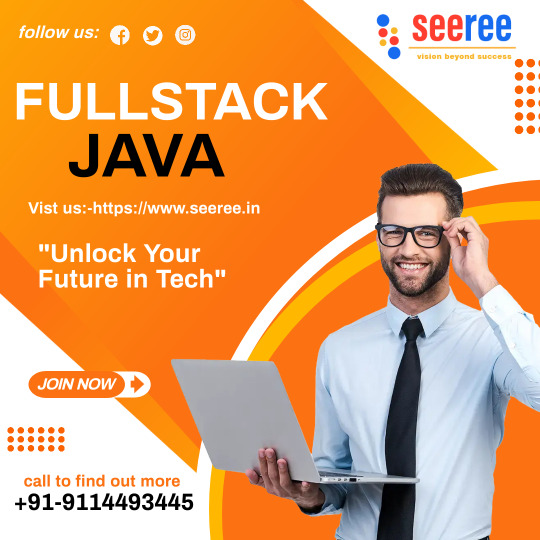
A Class in Java is where we teach objects how to behave. Education at seeree means way to success. The way of teaching by corporate trainers will bloom your career. We have the best java training classes in Bhubaneswar. 100% Placement Support. Job Support Post Training. This course will give you a firm foundation in Java, commonly used programming language. Java technology is wide used currently. Java is a programming language and it is a platform. Hardware or software environment in which a program runs, known as a platform. Since Java has its own Runtime Environment (JRE) and API, it is called platform. Java programming language is designed to meet the challenges of application development in the context of heterogeneous, network-wide distributed environment. Java is an object-oriented programming (OOP) language that uses many common elements from other OOP languages, such as C++. Java is a complete platform for software development. Java is suitable for enterprise large scale applications.]
Course2:- Python Fullstack

Seeree offers best python course in Bhubaneswar with 100% job assurance and low fee. Learn from real time corporate trainers and experienced faculties. Groom your personality with our faculty. Seeree helps to build confidence in students to give exposure to their skills to the company.
Python is dynamically typed , compiled and interpreted , procedural and object oriented , generalized , general-purpose , platform independent programming language. Python is a high-level, structured, open-source programming language that can be used for a wide variety of programming tasks.
Course3:- PHP Fullstack

seeree is the best training institute which provide PHP Training courses in bhubaneswar and all over odisha We aim the students to learn and grow altogether with the need of IT firms.
PHP is a server scripting language, and a powerful tool for making dynamic and interactive Web pages. PHP is a widely-used, free, and efficient alternative to competitors such as Microsoft's ASP.
Course4:- Preplacement Training & Sp. Eng

Welcome to SEEREE Institute, where excellence meets opportunity. At SEEREE, we are dedicated to providing a transformative learning experience that empowers students to achieve their goals and contribute to a brighter future.
Our institute offers cutting-edge courses designed to meet the needs of the ever-evolving global landscape. With a team of highly qualified instructors and state-of-the-art facilities, we ensure a supportive and inspiring environment for learning and growth.
Whether you're here to develop new skills, explore innovative fields, or pursue personal and professional success, SEEREE Institute is the perfect place to begin your journey. Thank you for choosing us, and we look forward to being a part of your success story.
Course5:- .NET Fullstack
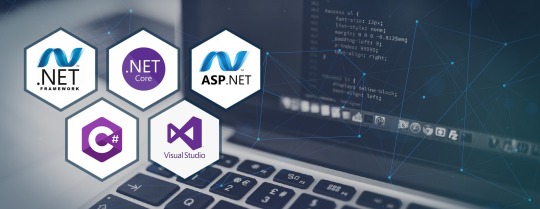
Seeree offers best .NET course in Bhubaneswar with 100% job assurance and low fee. Learn from real time corporate trainers and experienced faculties. Groom your personality with our faculty. Seeree helps to build confidence in students to give exposure to their skills to the company.
Course6:- SEO/Digital Marketing
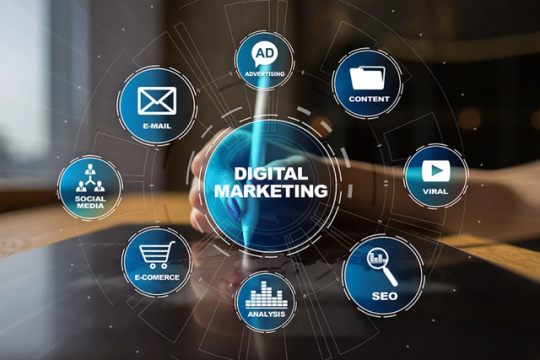
In today's fast-paced digital world, businesses thrive on visibility, engagement, and strategic online presence. At SEEREE, we empower you with the skills and knowledge to master the art of Search Engine Optimization (SEO) and Digital Marketing.
Our comprehensive program is designed for beginners and professionals alike, covering everything from keyword research, on-page and off-page SEO, and content marketing, to social media strategies, PPC campaigns, and analytics.
With hands-on training, real-world projects, and guidance from industry experts, we ensure you're equipped to drive measurable results and excel in this dynamic field.
Join us at SEEREE Institute and take the first step towards becoming a leader in the digital marketing landscape!"
Course7:- SAP
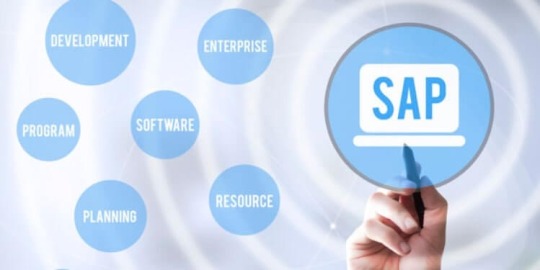
SAP refers to Systems, Applications, and Products in Data Processing. Some of the most common subjects covered in these courses include human resource software administration, database management, and business training. Obtaining SAP certification can be done on a stand-alone basis or as part of a degree program.
Course8:- MERN
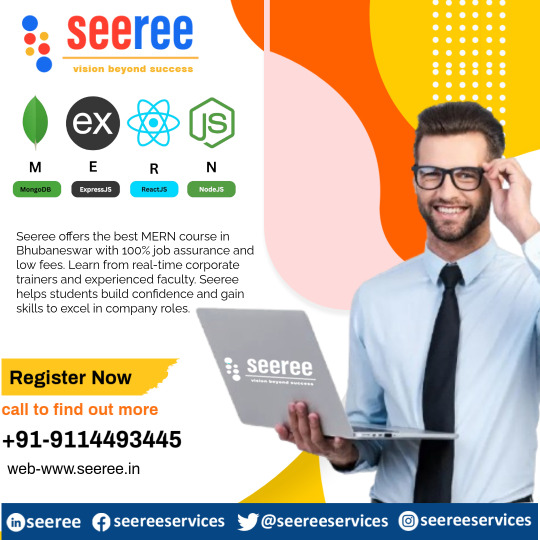
Seeree offers the best MERN course in Bhubaneswar with 100% job assurance and low fees. Learn from real-time corporate trainers and experienced faculty. Seeree helps students build confidence and gain skills to excel in company roles.
Are you ready to step into the exciting world of web development? At SEEREE, we bring you a comprehensive MERN Stack course that equips you with the skills to build modern, dynamic, and responsive web applications from start to finish.
The MERN Stack—comprising MongoDB, Express.js, React.js, and Node.js—is one of the most sought-after technologies in the web development industry. Our program is designed to help you master each component of the stack, from creating robust backends and managing databases to crafting dynamic frontends and seamless APIs.
Course9:- Software Testing
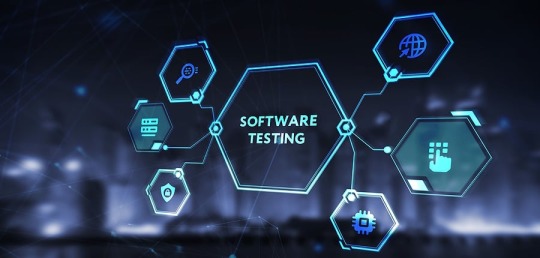
Seeree offers best Testing course in Bhubaneswar with 100% job assurance and low fee. Learn from real time corporate trainers and experienced faculties. Groom your personality with our faculty. Seeree helps to build confidence in students to give exposure to their skills to the company.
In the fast-paced world of software development, ensuring the quality and reliability of applications is crucial. At SEEREE, we offer a comprehensive Software Testing course designed to equip you with the skills and techniques needed to excel in this essential field.
Our program covers all aspects of software testing, from manual testing fundamentals to advanced automation tools and frameworks like Selenium, JIRA, and TestNG. You’ll learn to identify bugs, write test cases, execute test scripts, and ensure software meets high-quality standards.
With hands-on training, real-world scenarios, and guidance from experienced industry professionals, you’ll be prepared to take on roles like Quality Assurance Engineer, Test Analyst, and Automation Tester.
Join SEEREE Institute and gain the expertise to become a key player in delivering flawless software solutions. Your journey to a rewarding career in software testing starts here!"
Course10:- Data Analyst

Seeree offers the best Data Analyst course in Bhubaneswar with 100% job assurance and affordable fees. Our comprehensive curriculum is designed to cover all aspects of data analysis, from data collection and cleaning to advanced data visualization techniques. Learn from real-time corporate trainers and experienced faculty members who bring industry insights into the classroom. Enhance your analytical skills and boost your career prospects with hands-on projects and real-world case studies. Our faculty also focuses on grooming your personality and soft skills, ensuring you are well-prepared for interviews and workplace environments. Seeree is dedicated to building confidence in students, providing them with the necessary exposure to showcase their skills to top companies in the industry.
Course11:- Data Science

Seeree offers the best Data Science course in Bhubaneswar with 100% job assurance and affordable fees. Our comprehensive curriculum is designed to cover all aspects of data science, from data collection and cleaning to advanced data visualization techniques. Learn from real-time corporate trainers and experienced faculty members who bring industry insights into the classroom. Enhance your analytical skills and boost your career prospects with hands-on projects and real-world case studies. Our faculty also focuses on grooming your personality and soft skills, ensuring you are well-prepared for interviews and workplace environments. Seeree is dedicated to building confidence in students, providing them with the necessary exposure to showcase their skills to top companies in the industry.
Course12:- Data Engineering
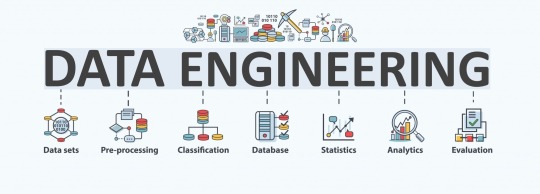
In the era of big data, the ability to design, build, and manage scalable data infrastructure is one of the most in-demand skills in the tech industry. At SEEREE, we are proud to offer a comprehensive Data Engineering course that prepares you for a career at the forefront of data-driven innovation.
Our program covers essential topics such as data modeling, ETL processes, data warehousing, cloud platforms, and tools like Apache Spark, Kafka, and Hadoop. You’ll learn how to collect, organize, and transform raw data into actionable insights, enabling businesses to make smarter decisions.
With real-world projects, expert mentorship, and hands-on experience with the latest technologies, we ensure that you are industry-ready. Whether you’re starting fresh or upskilling, this program will empower you to unlock opportunities in the rapidly growing field of data engineering.
Join SEEREE Institute and take the first step toward building the data pipelines that power tomorrow’s technology!"
Course13:- PGDCA

Seeree offers the best MERN course in Bhubaneswar with 100% job assurance and low fees. Learn from real-time corporate trainers and experienced faculty. Seeree helps students build confidence and gain skills to excel in company roles.
In today’s digital age, computer applications are at the heart of every industry, driving innovation and efficiency. At SEEREE Institute, our Post Graduate Diploma in Computer Applications (PGDCA) program is designed to provide you with in-depth knowledge and hands-on skills to excel in the IT world.
This program offers a comprehensive curriculum covering programming languages, database management, web development, software engineering, networking, and more. Whether you aim to enhance your technical expertise or step into a rewarding career in IT, PGDCA at SEEREE equips you with the tools to succeed.
With expert faculty, state-of-the-art labs, and real-world projects, we ensure that you gain practical experience and a strong theoretical foundation. By the end of the program, you’ll be prepared for roles such as software developer, system analyst, IT manager, or database administrator.
Course14:- Tally

Seeree offers the best Tally course in Bhubaneswar with 100% job assurance and low fees. Learn from real-time corporate trainers and experienced faculty. Seeree helps students build confidence and gain skills to excel in company roles.
In today’s business world, efficient financial management is key to success, and Tally is one of the most trusted tools for accounting and financial operations. At SEEREE Institute, we offer a comprehensive Tally course designed to equip you with the skills needed to manage business finances effortlessly.
Our program covers everything from the basics of accounting and bookkeeping to advanced features like GST compliance, inventory management, payroll processing, and generating financial reports. With hands-on training and real-world applications, you’ll gain practical expertise in using Tally effectively for businesses of any scale.
Whether you're a student, a professional, or a business owner, our Tally program is tailored to meet your needs and enhance your career prospects in the fields of accounting and finance.
Course15:- Graphics Design

In the world of creativity and communication, graphic design plays a vital role in bringing ideas to life. At SEEREE Institute, our Graphic Design course is tailored to help you unlock your creative potential and master the art of visual storytelling.
Our program covers a wide range of topics, including design principles, color theory, typography, branding, and user interface design. You’ll gain hands-on experience with industry-standard tools like Adobe Photoshop, Illustrator, and InDesign, enabling you to create stunning visuals for print, digital media, and beyond.
Whether you're an aspiring designer or a professional looking to sharpen your skills, our expert trainers and real-world projects will provide you with the knowledge and confidence to excel in this competitive field.
Join SEEREE Institute and start your journey toward becoming a skilled graphic designer. Let’s design your future together!"
2 notes
·
View notes
Text
Masterschool enrolment...
So I've taken a risk, and I've enrolled with Masterschool for Software Engineering. It begins in January and I have to pay tuition fees once I get a job, which is definitely something I can do. I certainly couldn't afford it straight up, so I'm happy that I can pay once I get a job. Unfortunately it does revolve around Python, however I think I should be able to transfer what I learn to other object-orientated programming. Wish me luck!! Until then, I'll continue my learning with SheCodes and Udemy...
18 notes
·
View notes
Text



August 15, 2024 - Software Design and Engineering Orientation Day
Week 1 Starting in August, I am officially a third-year college student studying at USTP CDO, and classes start in the third week. And the day to return to reality was last Thursday, August 15. That day marks not just the start of class or the return to school but also the orientation for the Software Design and Engineering course I am taking. So I got up early and started getting for school, despite the fact that our class starts at 12 noon. You may be asking why so early given that I live near the university, but you may be familiar with the tense, thrilling feeling in the night before our trip the next day, which makes it difficult to fall asleep. Yes, I felt the same nervousness that day or night before I went to bed, but for the opposite reason. I did not think I was ready to go back to school, and based on the name of the subject, it sounds like a rather scary one, so that's why I was nervous. Nevertheless, I have to do it. So I arrived at school, entered our classroom, and before we began, we were asked to introduce ourselves by stating our name, age, address, and favorite music (I went with Castles Crumbling by Taylor Swift). Following that, we talked about the course's objectives and requirements, including the grading system, and then we recited the student pledge together. That's basically what happened during our orientation. And, I hope that we finish this subject as well as we started it.
2 notes
·
View notes
Text
Astronaut AU Definitions
Since we're getting into more mission oriented chapters and I'm not sure how technical things will get, a definition post that I will link on future chapters and add to as needed:
Flight Controllers: CAPCOM: Capsule communicator; direct line of contact between astronauts and mission control
CDH: Command and Data Handling Officer; manages computer systems, software, data, and display interfaces on Orion
EECOM: Emergency, Environmental, and Consumables Officer; monitors environmental controls, life support systems, and emergency procedures in Orion
FAO: Flight Activities Officer; manages and coordinates the flight plan to meet mission objectives, including timeline of all crew activities
FIDO: Flight Dynamics Officer; monitors the trajectory of Orion through the entire mission
Flight: The flight director; oversees all mission control activity
GNC: Guidance, Navigation, and Control Officer; operates and monitors navigation and flight control software on Orion
INCO: Integrated Communications Officer; monitors Orion's communication systems (data, telemetry, and video)
MPO: Mechanical and Power Officer; monitors electrical, mechanical, structural, and landing/recovery systems on Orion including batteries, solar arrays, thermal protection, etc.
PAO: Public Affairs Officer (Marge!); provides mission commentary, explains the mission and flight control operations to the public/media, and coordinates events between the media and crew/mission control
Prop: Propulsion Officer; monitors Orion's propulsion systems, engine burns, position control maneuvers
General Space Program/Mission Terminology: AGS: abort guidance system
ESA: European Space Agency
ESL: Earth Landing System - jettisons the crew capsule heat shield and releases the parachutes during re-entry into Earth’s atmosphere
EVA: Extravehicular activity (spacewalks and moonwalks)
G-LOC: Loss of consciousness due to G forces on the body; occurs when increased force of gravity causes blood to drain away from the head.
G-suit: a special flight suit worn by pilots to prevent blackout due to high G forces. Keeps blood from pooling in the lower body.
ISS: International Space Station
JSC: Johnson Space Center in Houston TX
KSC: Kennedy Space Center in Cape Canaveral, FL
Neutral Buoyancy Tank: Giant water tank at JSC used to simulate working in zero gravity
OCS suits: Orion Crew Survival suits; the space suits worn inside the spacecraft during critical mission phases and in an emergency situation
Launch and Other Spacecraft Terminology: APU: Auxiliary Power Unit; provides power/electricity to the spacecraft
Feet Wet: Navy and Air Force speak for being over water
“G” or Gs: the force of gravity (7 Gs is 7 times the force of gravity on Earth)
GLS: Ground Launch Sequencer; automated system that controls the countdown from about T-10 minutes on. Starting at this point, 'T-' is used instead of 'L-'
H-dot: the time derivative of height (the ascent rate of a space vehicle) during launch
ICPU: Interim Cryogenic Propulsion Stage; another stage of the SLS with more engines that are used to reorient the spacecraft after core stage separation
LEO: Low Earth Orbit
LLO: Low Lunar Orbit
Max q: maximum dynamic pressure on the rocket due to pushing through the thickest part of the atmosphere at high speeds
MECO: Main Engine Cut Off (literally cutting off the main engine)
NRHO: Near-Rectilinear Halo Orbit; the orbit that Orion will be in around the moon, balanced between the moon's gravity and the Earth's gravity; spacecraft in constant contact with and view of Earth
PGNS: pronounced “pings,” Primary Navigation and Guidance System
RRT: Re-entry interface - the moment the capsule re-enters Earth’s atmosphere
SRB: Solid Rocket Booster; solid propellant motors providing additional thrust (there are two on the sides of SLS)
TLI: Trans-Lunar Injection burn; firing the engines to get the spacecraft on a path towards the moon
4 notes
·
View notes
Text
A Comprehensive Guide to Power Systems Protection for Engineers
Introduction:
Power systems protection is a critical aspect of electrical engineering that focuses on safeguarding electrical equipment, personnel, and the power grid from faults, failures, and abnormal operating conditions. This comprehensive guide aims to provide engineers with valuable insights into key principles, techniques, and best practices in power systems protection.
1. Understanding System Operation and Fault Types:
Before delving into protection strategies, it is essential to have a solid understanding of how power systems operates and the various types of faults that can occur. This includes studying system components, such as generators, transformers, transmission lines, circuit breakers, relays, and protective devices. Familiarity with fault types like short circuits, open circuits, ground faults, and transient overvoltages is crucial as a foundation.
2. Principles of Protection Coordination:
Effective power systems protection requires proper coordination among protective devices. Engineers must understand the concept of selectivity to ensure that only the device closest to a fault operates, minimizing disruption to the rest of the system. Proper coordination involves selecting appropriate current settings, time delays, and coordination curves for relays and circuit breakers.
3. Relay Device Fundamentals:
Relays are an integral part of power systems protection, serving as the first line of defense against electrical faults. Engineers should have a thorough knowledge of different relay types, including overcurrent relays, differential relays, distance relays, and directional relays. Understanding their operating principles, features, and limitations aids in choosing the most suitable relays for specific applications.
4. Protective Device Coordination:
Coordinating protective devices within a system is critical to maintaining stability and preventing cascading failures during faults. Engineers must carefully analyze and design protection schemes that consider factors such as fault impedance, fault currents, relay response characteristics, and coordination margins. Advanced techniques like time grading and impedance grading can be employed to achieve optimal coordination.
5. Fault Analysis and System Modeling:
Performing fault analysis and system modeling helps engineers gain insights into power flow, fault currents, voltage profiles, and system stability. Engineers must be proficient in using software tools like ETAP, PSCAD, and DSA Tools to accurately simulate fault scenarios and assess the performance of protection schemes. Detailed knowledge of system modeling techniques enables engineers to make informed decisions regarding relay settings and coordination.
6. Communication-Based Protection:
With the increasing complexity of modern power systems, communication-based protection plays a crucial role in maintaining reliability. Knowledge of communication protocols such as IEC 61850, GOOSE (Generic Object-Oriented Substation Event), and SCADA (Supervisory Control and Data Acquisition) systems is essential for engineers to design and implement advanced protection solutions that utilize real-time data exchange between substations and control centers.
7. Integration of Automation and Control Systems:
Incorporating automation and control systems into power systems protection enhances operational efficiency and reduces response time during faults. Engineers need to understand concepts like remote terminal units (RTUs), programmable logic controllers (PLCs), and human-machine interfaces (HMIs). Familiarity with protocols like Modbus, DNP3 (Distributed Network Protocol), and OPC (OLE for Process Control) enables seamless integration of protection systems with wider control infrastructure.
8. Commissioning, Testing, and Maintenance:
Implementing effective protection strategies requires thorough commissioning, testing, and maintenance procedures. Engineers should be well-versed in practices like primary injection testing, secondary injection testing, relay calibration, fault simulation, and periodic inspections. Adhering to manufacturer guidelines, industry standards, and safety protocols ensures equipment reliability and optimal performance.
9. Access to Resources and Industry Awareness:
Staying connected with organizations like the IEEE (Institute of Electrical and Electronics Engineers) and IET (Institution of Engineering and Technology) is crucial for access to valuable resources. Engineers should actively seek research papers, technical articles, conferences, and networking opportunities. Staying informed about relay technology advancements from prominent manufacturers aids in adopting the latest protection techniques.
10. Software Applications for Enhanced Protection:
Utilizing software applications is vital in power systems protection. Advanced tools like ETAP, PSCAD, and DSA Tools aid in relay coordination analysis, fault simulation, and system modeling. Acquiring proficiency in these common industry software packages enables engineers to design and optimize protection schemes effectively.
11. Compliance with Local National Codes:
Adhering to local national codes and regulations is paramount in power systems protection. Understanding and implementing specific electrical codes and standards relevant to the country of operation is crucial. Compliance ensures safe and reliable system design, installation, and operation aligned with legal requirements and best practices.
Conclusion:
By encompassing the principles, techniques, and best practices discussed in this guide, engineers pursuing careers in power systems protection can develop a strong foundation. Continuous learning, staying updated on industry advancements, and compliance with local national codes will ensure engineers can design, implement, and maintain robust and reliable protection schemes for the power grid and its critical assets.
The Author Biography: Qusi Alqarqaz
Qusi Alqarqaz is an experienced professional in power system protection, specializing in sharing knowledge and guiding young engineers. With a career spanning utility and oil and gas industries in Texas, New Mexico, and Qatar, he has amassed extensive industry experience.
Collaborating with leading manufacturers such as SEL, ABB, Siemens, Schneider, among others, Qusi has gained proficiency in a range of protective relays. He actively pursues continuing education, completing professional development courses with software providers including ETAP and Milsoft, enabling him to utilize advanced tools for power system analysis and protection design.
Qusi's dedication to staying up-to-date with industry advancements led him to pursue additional training. He completed professional development courses at Wisconsin University, equipping him with specialized knowledge crucial for working with high-voltage power systems. He also studied power generation extensively at Strathclyde University in the UK.
Qusi actively shares his knowledge through collaborating on large-scale projects and providing training sessions for professionals. Through his posts, he aims to offer guidance and mentorship for young engineers in power system protection. His practical advice and personal experiences will empower the next generation of experts in this field.
Contact the Author:
Qusi actively shares his knowledge through collaborating on large-scale projects and providing training sessions for professionals.
Qusi Alqarqaz
9 notes
·
View notes
Text
Java Training | Java Training Institute | Ghaziabad- India
Java is one of the best programming languages that you can learn. It has several benefits for developers and organizations. Java programming is used to focus on simplicity, portability, and security. It can also used to develop a wide range of applications, including desktop software, web applications, mobile apps, enterprise systems, and embedded systems. Java is an object-oriented language, which means it supports concepts like classes, objects, inheritance, and polymorphism. Joining an institute provides a structured learning environment with a well-defined curriculum. It ensures that you learn Java concepts in a logical order, building a strong foundation and gradually progressing to more advanced topics.
Elevate your career with our Java training program that combines theoretical knowledge with hands-on practice. Microvision Technology is the Best Java Training Institute in Ghaziabad. We provide the best knowledge and experience to the students. We provide 3-day Free Demo Classes, 15-day Classes For Freshers/ Beginners, Live- Projects, Live URLs, Live- Coding, and yes Free Web- Designing Classes. For more information and exciting offers go check our site or directly give us a call at 8077715318. Join our Java training and embark on a journey towards becoming a sought-after software engineer!
2 notes
·
View notes
Text
"Magnetic levitation is already employed in systems such as Maglev trains, flywheels and high-speed machinery. Now researchers at the Technical University of Denmark have given this old technology a fresh twist by explaining how a magnet can be levitated simply by rotating another magnet of a similar size near it. This unusual effect was first demonstrated by an electronics/computer and software engineer, Hamdi Ucar, in 2021, and the TU-Denmark team say it could be exploited in the contactless handling of objects or used to trap and manipulate ferromagnetic microparticles.
There are three main types of magnetic levitation. In the first, known as active magnetic stabilization, a control system supplies the magnetic force required keep the levitating object balanced. The second, termed electrodynamic suspension, is used in Maglev trains. Here, a moving magnet induces a current in a stationary conductor, producing a repulsive force that increases with the speed of the moving magnet. The last category, called spin-stabilized levitation, features a levitating magnet that spins at around 500 revolutions per minute (rpm) and remains stable thanks to the gyroscopic effect.
The new type of levitation involves two magnets. The first, dubbed the “rotor”, is mounted on a motor with its north and south poles oriented perpendicular to its rotation axis and made to rotate at velocities of around 10 000 rpm. In the TU-Denmark team’s experiments, this magnet was spherical, 19 mm in diameter and made from neodymium-iron-boron.
The second magnet – the “floater” – is placed near the rotor, begins to spin automatically, and then moves towards the rotor until it hovers in space a few centimetres below it. The floater precesses with the same frequency as the rotor and its magnetization is oriented close to the axis of rotation and towards the like pole of the rotor magnet. If disturbed, a restoring force moves it back to its equilibrium position.
“It is quite surprising that magnetic levitation develops in such as relatively simple system,” says Rasmus Bjørk, a physicist at TU-Denmark who led the study together with Frederik Laust Durhuus and Joachim Marco Hermansen."
"“It is intuitive to all that the magnetostatic force that one magnet exerts on another can be both attractive and repulsive,” explains Durhuus. “Without rotation, the free magnet will rotate so the force becomes purely attractive and then the magnets will collide into each other. What makes the new magnetic levitation system so special is that the rotation itself allows the floater to remain in a counterintuitive configuration, nearly perpendicular to the rotor’s field, where the magnetostatic force both attracts and repels it.”
continue reading article
#levitation#magnetism#magnetic levitation#rotation#counter rotation#spinning#gyroscopic effect#energy#electromagnetism#physics#north and south poles#polarity#dipolar coupling#science#technology#discovery
2 notes
·
View notes
Text
Python Development Course: Empowering the Future with Softs Solution Service

Python, a high-level programming language, has emerged as a favorite among developers worldwide due to its emphasis on readability and efficiency. Originating in the late 1980s, Python was conceived by Guido van Rossum as a successor to the ABC language. Its design philosophy, encapsulated by the phrase "Beautiful is better than ugly", reflects a commitment to aesthetic code and functionality.
What sets Python apart is its versatile nature. It supports multiple programming paradigms, including procedural, object-oriented, and functional programming. This flexibility allows developers to use Python for a wide range of applications, from web development and software engineering to scientific computing and artificial intelligence.
Python’s standard library is another of its strengths, offering a rich set of modules and tools that enable developers to perform various tasks without the need for additional installations. This extensive library, combined with Python’s straightforward syntax, makes it an excellent language for rapid application development.
One of Python's most significant contributions to the tech world is its role in data science and machine learning. Its easy-to-learn syntax and powerful libraries, like NumPy, Pandas, and Matplotlib, make it an ideal language for data analysis and visualization. Furthermore, frameworks like TensorFlow and PyTorch have solidified Python's position in the development of machine learning models.
Education in Python programming has become crucial due to its growing demand in the industry. Recognizing this, institutions like Softs Solution Service, IT training institute in Ahmedabad, have stepped up to provide comprehensive Python Development Training. Their Online Python Development Course is tailored to meet the needs of both beginners and seasoned programmers. This course offers an in-depth exploration of Python's capabilities, covering everything from basic syntax to advanced programming concepts.
The course structure usually begins with an introduction to Python's basic syntax and programming concepts. It then progressively moves into more complex topics, such as data structures, file operations, error and exception handling, and object-oriented programming principles. Participants also get to work on real-life projects, which is vital for understanding how Python can be applied in practical scenarios.
A significant advantage of online courses like the one offered by Softs Solution Service is their accessibility. Students can learn at their own pace, with access to a wealth of resources and support from experienced instructors. Additionally, these courses often provide community support, where learners can interact with peers, share knowledge, and collaborate on projects.
Python's future seems bright as it continues to evolve with new features and enhancements. Its growing popularity in various fields, including web development, data analytics, artificial intelligence, and scientific research, ensures that Python developers will remain in high demand.
In summary, Python is not just a programming language; it's a tool that opens a world of possibilities for developers, data scientists, and tech enthusiasts. With resources like the Online Python Development Course from Softs Solution Service, mastering Python has become more accessible than ever, promising exciting opportunities in the ever-evolving world of technology.
#IT Training and Internship#Softs Solution Service#IT Training Institute in Ahmedabad#Online Python Development Course#Python Development Training#Python Development Course
3 notes
·
View notes